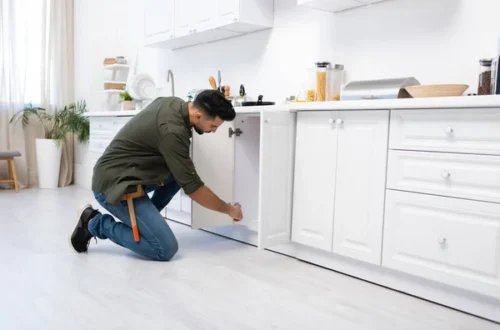Over the past 10 years, Americans have focused more on climate change. There is no denying that this is a major problem.
The effects of climate change and the effects that society has on Earth have led to the rise of a social movement. Many people are joining the growing eco-friendly movement.
One person can make a difference by going green. If you are looking to play a part in this movement, consider living sustainably. If you live sustainably, you can reduce your carbon emissions and help the planet.
This guide lists the top 10 hacks for greener living.
1. Eat Less Meat
Did you know that consuming meat is bad for the planet? Yes, eating meat can harm the environment. Like humans, cattle have a carbon footprint. Cattle consume resources. This contributes to the greenhouse gas effect.
Cattle release a large amount of methane into the atmosphere. Cattle also release carbon dioxide and nitrous oxide. These are all harmful greenhouse gases.
If you cut back on eating meat, you can help to cut back on the overall emission of these gases. Another benefit of eating less meat is less need for livestock. With less livestock, there will be more land for recreational use.
2. Recycle as Much as You Can
Recycle, recycle, recycle. This is the phrase you should keep in mind when it’s time to throw out something at home. Don’t go tossing out things that you can recycle.
Various items can be recycled. Paper, plastic, and glass are some of the items that you can recycle. It’s sad to think that many of these items end up in a landfill where they will sit.
3. Reuse as Much as You Can
Like being responsible by recycling, consider reusing items instead of throwing them away. Instead of buying water in plastic bottles, take one plastic bottle and reuse it over and over again.
Even better, buy a stainless steel water bottle. Refill this bottle as you need to. Besides helping the environment, doing this can help you save money.
Do you use plastic wrap or aluminum foil to pack your lunch or store your food? Stop using plastic wrap and aluminum foil. Instead, use reusable food wraps.
There are reusable food wraps made from cotton cloth that you can use to store food. These wraps can be cleaned with diluted dishwater and a dishcloth. Then store them for reuse.
You can do the same if you’re a frequent coffee drinker. When you go to your favorite coffee shop, you drink from a cup that you throw away in the garbage. The cup and the lid can’t be recycled.
Buy a reusable coffee cup. After you’re done drinking your coffee, wash the cup and reuse it. This is a great way to cut down on needless waste.
4. Use Natural Cleaning Products
Lose the cleaning products that contain chemicals. The chemicals in most cleaning products found in homes are present environmental concerns. The chemicals take a long time to biodegrade.
Instead of using cleaning products that contain harmful ingredients, use cleaning products that are “green” or eco-friendly. You can even make your own cleaning products from ingredients you may have in your home.
Vinegar, lemon, and baking soda make great cleaning ingredients. Essential oils also make great cleaning ingredients. Lavender is one essential oil that offers antibacterial properties.
5. Reduce Energy Use
Greener living means cutting down on energy use in the home. Think about lowering your thermostat during the winter. During the hot summer months, you should raise it.
Go around the home and unplug any appliances that aren’t in use. This includes the toaster, the coffee machine, and the microwave.
When doing laundry, wash clothes on cold whenever possible. If you have a backyard, try drying your clothes on a clothesline.
6. Reduce Water Waste
Earth-friendly living means using less water. There are several things you can do to cut back on your water use. If you usually take a 10-minute shower, cut it down by a few minutes.
To reduce the amount of water that’s wasted in the shower, install a low-flow showerhead. Want to go the extra mile, leave a small bucket under the shower to collect water to use to water the plants.
7. Start a Compost Bin
For persons who have a backyard, a compost bin makes for a great way to live a sustainable life. Give your natural waste back to nature.
Food scraps should go in a compost bin. Yard waste goes in there well too. The result is nutrient-rich soil. You can use the soil to plant your own garden.
8. Buy the Right Light Bulb
Next time one of the light bulbs in your home goes out, replace it with an energy-efficient lightbulb. Ditch all the traditional incandescent light bulbs.
Energy-efficient light bulbs offer several advantages. Look for bulbs that have the Energy Star seal on them.
9. Ditch the Plastic Bags
Imagine all the plastic bags that are used every day at the supermarket. The majority of these bags end up in landfills. Want to make a difference, do away with plastic bags by using a reusable shopping bag.
Never leave home without your reusable shopping bag. Keep one in the car and one at home. If you do forget your reusable shopping bag when you go to the supermarket, ask for a paper bag.
10. Install Solar Panels
If you live in an area where there is a lot of sunlight, consider installing solar panels on the roof or around the house. Solar panels can reduce energy costs and reduce environmental harm.
The benefits of solar panels are great. Call your local solar panel company for an estimate.
Live Sustainably to Help the Environment
You can make a difference by following these 10 hacks. If you live sustainably, you can reduce carbon emissions and prevent further harm on the Earth. Greener living is the way to go.
To read more interesting articles, explore the rest of our blog.






